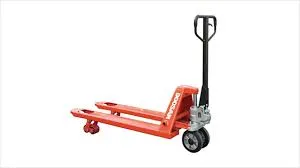


Understanding Fall Protection Frequently Asked Questions
Fall protection is a critical aspect of workplace safety, especially in industries such as construction, maintenance, and manufacturing. Understanding the necessary precautions can help prevent serious injuries and save lives. Below are some frequently asked questions (FAQs) regarding fall protection to provide clarity on this important subject.
What is fall protection?
Fall protection refers to a variety of safety measures and equipment designed to prevent workers from falling from heights. This can include guardrails, safety nets, personal fall arrest systems, and more. The goal of fall protection is to eliminate the risk of falling or to minimize the consequences if a fall does occur.
Who needs fall protection?
Any worker who is exposed to fall hazards, particularly those working at heights of six feet or more in the construction industry (or four feet in general industry), is required to use fall protection. This applies to various professions, including construction workers, roofers, and maintenance personnel. Employers are responsible for identifying fall hazards in the workplace and ensuring that appropriate safety measures are in place.
What are the types of fall protection systems?
Fall protection systems can be categorized into several types
1. Guardrails These are barriers installed around edges to prevent falls. 2. Safety Nets Nets are placed below to catch workers if they fall, reducing the impact of the fall.
3. Personal Fall Arrest Systems (PFAS) These include harnesses and lanyards that keep a worker from hitting the ground if they fall.

5. Warning Lines and Safety Monitors These are used to alert workers to fall hazards in areas where guardrails may not be practical.
When should fall protection be used?
Fall protection should be employed whenever workers are exposed to potential fall hazards. This includes, but is not limited to, working on ladders, scaffolding, roofs, or elevated platforms. Employers should conduct thorough job hazard analyses (JHAs) to determine when and what type of fall protection is necessary.
How can employers ensure compliance with fall protection standards?
Employers must adhere to Occupational Safety and Health Administration (OSHA) regulations regarding fall protection. This includes conducting training for workers on safety practices and the proper use of fall protection equipment. Regular inspections of work sites and all fall protection equipment should also be carried out to ensure everything is in good working order.
What training is required for employees regarding fall protection?
Employees must receive training that covers the recognition of fall hazards, the proper use of fall protection systems, and the limitations of the equipment. This training should be conducted by qualified personnel and should include both theoretical knowledge and practical demonstrations.
What should I do if I notice a fall hazard?
If you identify a fall hazard in your workplace, it is crucial to report it to your supervisor immediately. Prompt action can help prevent accidents. Additionally, if you do not have the authority to correct the hazard, you may provide suggestions or request that the employer address the issue.
Conclusion
Fall protection is a vital component of workplace safety that should not be overlooked. By understanding the requirements and best practices related to fall protection, workers and employers can ensure a safer work environment. Awareness, training, and proper use of safety equipment are essential to preventing falls and reducing the risk of injury on the job. Remember, safety is everyone’s responsibility, and proactive measures can make a significant difference in protecting lives.



